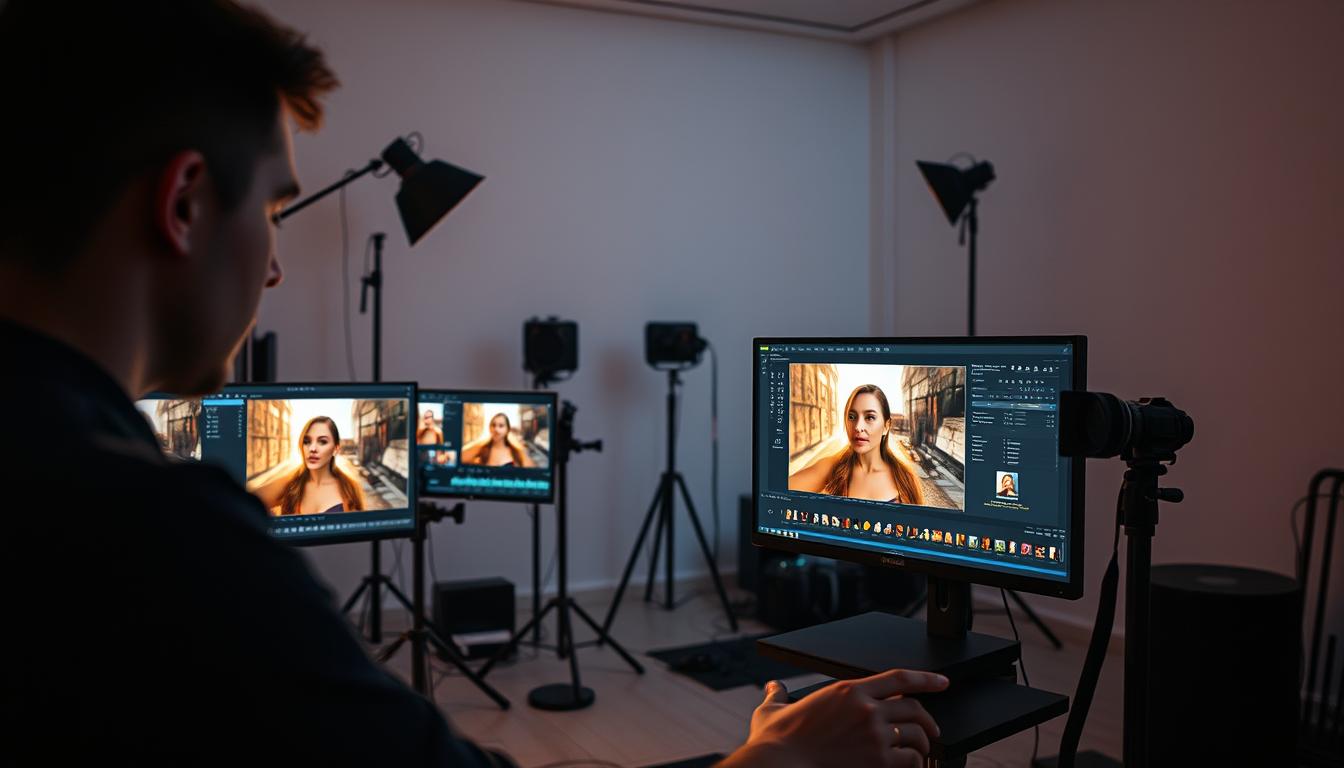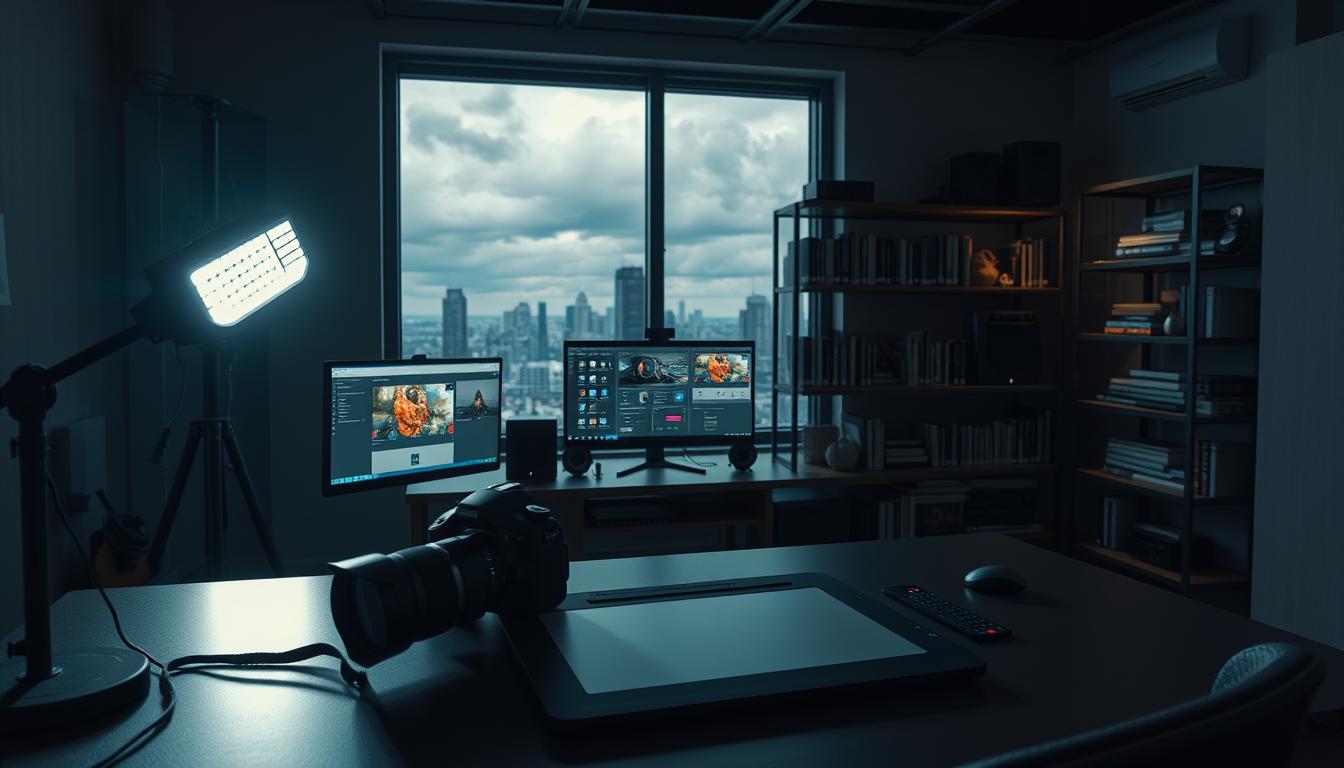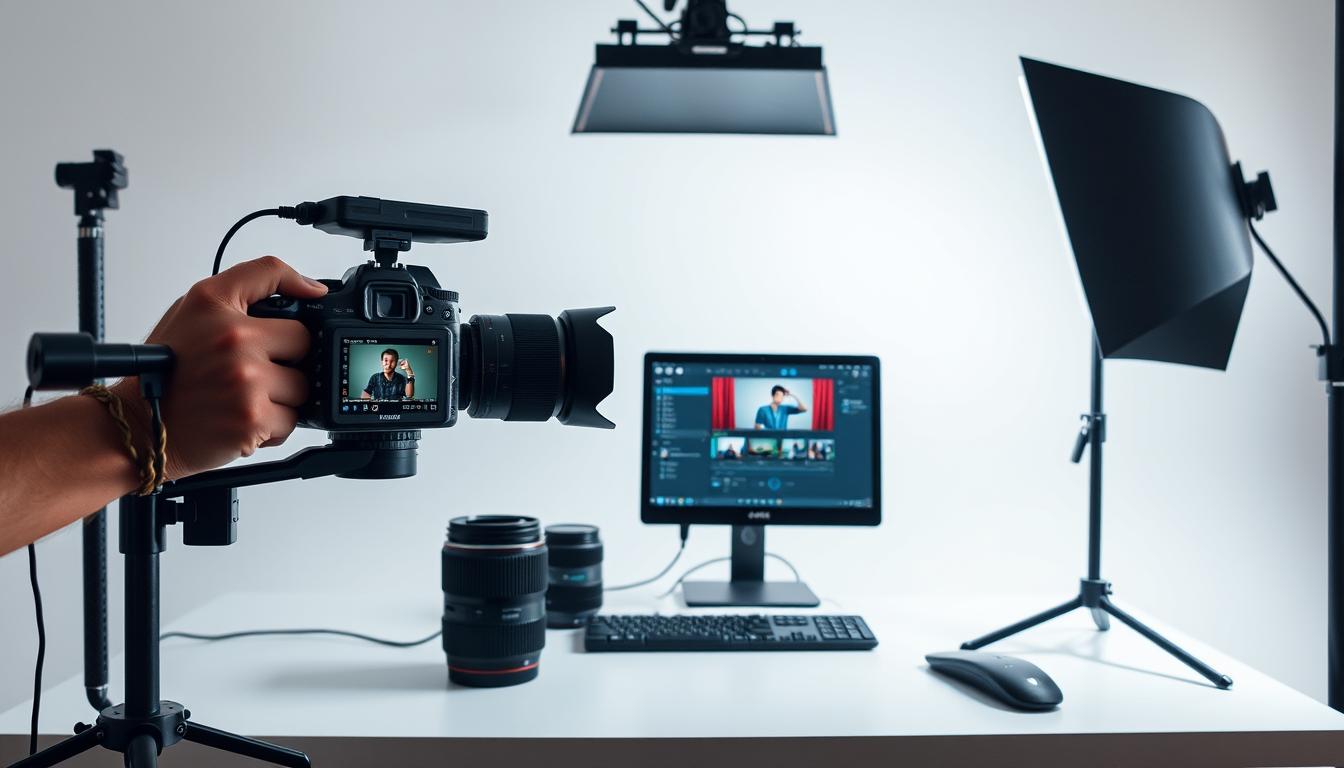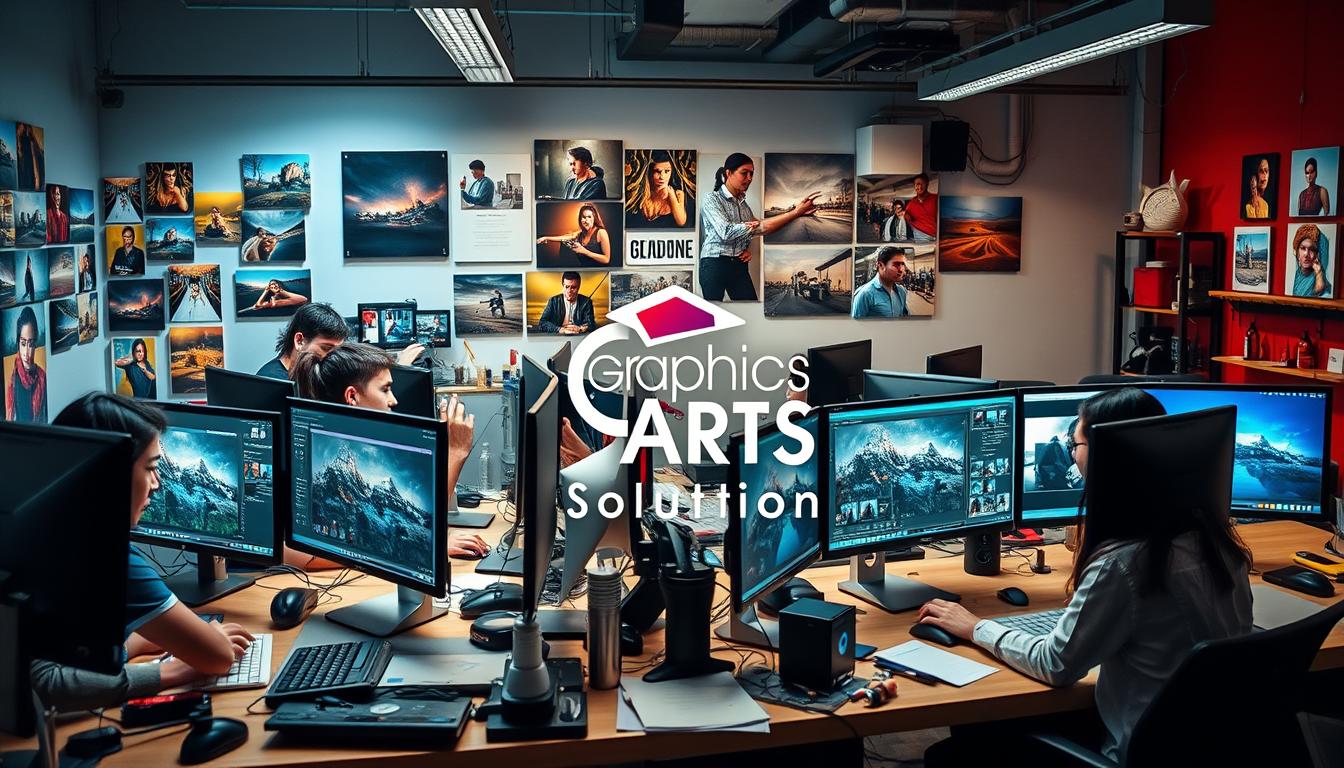Photo editing techniques play a crucial role in enhancing the quality of images captured through various devices.
In simple terms, photography editing refers to the process of modifying images to improve their aesthetic appeal or to correct flaws.
This process involves a range of techniques, from basic adjustments like brightness and contrast to more complex manipulations such as image enhancement.
The significance of photography editing lies in its ability to transform ordinary images into extraordinary ones, making it an essential skill for photographers and graphic designers alike.
The Essence of Photography Editing
At its core, photography editing is an intricate blend of technical skills and creative vision. This dual nature makes it a fascinating field that continues to evolve with technology and artistic trends.
Defining the Art and Science
Photography editing combines the precision of science with the creativity of art. On one hand, it involves understanding the technical aspects of image processing, such as exposure correction and color grading. On the other hand, it requires a creative eye to enhance the visual appeal and storytelling of the image. Key techniques include:
- Adjusting exposure and contrast
- Correcting colors and white balance
- Applying creative filters and effects
Editors must balance these elements to produce a final image that meets the photographer’s vision.

Evolution of Photo Editing
The history of photo editing is marked by significant milestones, from the early days of darkroom techniques to the current era of digital editing software. The transition from film to digital photography revolutionized the editing process, making it more accessible and versatile. Today, photographers can use advanced software like Adobe Lightroom and Photoshop to achieve complex edits with ease. Some key developments in photo editing history include:
- The introduction of digital image processing
- The rise of software like Adobe Photoshop
- The proliferation of mobile editing apps
These advancements have not only improved the quality of edited images but have also democratized photo editing, allowing more people to participate in this creative process.
Why Photography Editing Matters
The importance of photography editing cannot be overstated, as it transforms ordinary images into extraordinary ones. Photography editing is not just about correcting flaws; it’s an art that enhances the narrative and emotional impact of an image.
Effective photography editing can make a significant difference in how a photograph is perceived. It involves a range of techniques from basic adjustments to complex manipulations, all aimed at improving the image’s overall quality and impact.
Enhancing Visual Storytelling
Photography editing plays a crucial role in visual storytelling. By adjusting elements such as contrast, color, and composition, editors can guide the viewer’s eye and emphasize the story being told. For instance, enhancing the contrast can draw attention to specific parts of the image, while color adjustments can evoke certain emotions.
Visual storytelling is about conveying a message or telling a story through images. Photography editing enhances this by ensuring that every element in the image contributes to the narrative. This can involve removing distractions, adjusting lighting, or even adding elements to enhance the story.
Creating Professional-Quality Images
Photography editing is essential for creating professional-quality images. It involves not just correcting errors, but also refining the image to meet professional standards. This includes ensuring consistency in color, contrast, and overall aesthetic appeal.
A well-edited photograph can significantly enhance a photographer’s portfolio, making their work more attractive to potential clients. Moreover, professional-quality images are more likely to stand out in competitive environments such as advertising and media.
Photography Editing Process Explained
Photography editing is a multifaceted process that transforms raw images into visually stunning works of art. This process is essential for photographers to enhance their craft, ensuring that their final images are of the highest quality.
From Capture to Final Image
The journey from capturing an image to producing the final edited photograph involves several key steps. Initially, photographers capture images using their cameras, considering factors such as lighting, composition, and subject matter. Once the images are captured, they are transferred to a computer for editing.
The editing process begins with selecting the best images from the shoot, followed by importing them into editing software. Editors then adjust parameters such as exposure, contrast, and color balance to enhance the image. Advanced techniques, including layering and masking, can be applied to achieve specific effects or to correct complex issues within the image.

Workflow Fundamentals
An efficient editing workflow is crucial for productivity and consistency in photography editing. This involves establishing a systematic approach to editing, including organizing files, using consistent naming conventions, and applying a standard editing process to all images.
A well-structured workflow also involves utilizing the right tools and software for the task. Professional photographers often rely on industry-standard software such as Adobe Lightroom and Photoshop, which offer a comprehensive range of editing tools and capabilities.
By understanding and implementing a structured editing workflow, photographers can significantly enhance their productivity and the quality of their final images.
Types of Photography Editing
Photography editing is not a one-size-fits-all process; it includes several distinct types tailored to different needs. Understanding these types is essential for photographers and editors to achieve their desired outcomes.
The diverse world of photography editing can be broadly categorized into three main types: Basic Corrections, Creative Enhancements, and Composite Editing. Each type serves a unique purpose and requires specific techniques and skills.
Basic Corrections
Basic Corrections involve adjusting the fundamental aspects of an image to improve its overall quality. This includes exposure adjustments, white balance correction, and noise reduction. These edits are essential for ensuring that the image looks natural and well-captured.
Creative Enhancements
Creative Enhancements go beyond basic corrections, allowing editors to add their artistic touch to the image. This can include color grading, adding textures, or applying filters to give the image a specific mood or style. Creative enhancements are used to convey a particular message or evoke an emotional response.
Composite Editing
Composite Editing involves combining multiple images or elements into a single image. This technique is used to create complex scenes or to replace parts of an image. Composite editing requires advanced skills, including masking and layer blending, to achieve a seamless result.
Understanding and mastering these types of photography editing can significantly enhance the quality and impact of photographs. Whether it’s correcting flaws, enhancing the aesthetic appeal, or creating entirely new images, the right editing techniques can make a substantial difference.
Essential Photography Editing Tools
To achieve professional-quality images, photographers rely on essential editing tools that offer precision and creative control. The right software can make a significant difference in the editing process, whether you’re a professional photographer or an enthusiast.
Professional Software Options
For those who require advanced features and precision, professional software is the way to go. These programs offer a wide range of tools that can help in achieving the desired outcome.
Adobe Creative Suite
Adobe Creative Suite is a powerhouse in the photography editing world, offering a comprehensive set of tools including Lightroom and Photoshop. These applications are industry standards, providing photographers with the capabilities to edit, enhance, and manipulate images to a high level of detail. As
Alternative Professional Programs
While Adobe Creative Suite is highly regarded, there are alternative professional programs available, such as Skylum Luminar and Capture One. These offer unique features and sometimes more user-friendly interfaces, catering to different preferences among photographers.
Mobile Editing Applications
The rise of mobile editing applications has made it possible for photographers to edit on the go. These apps offer convenience and a range of features that can be just as effective as their desktop counterparts.
iOS Photo Editing Apps
For iOS users, apps like VSCO and Snapseed are highly popular, offering a variety of filters and editing tools that can significantly enhance images. These apps are intuitive and powerful, making them great options for mobile editing.
Android Photo Editing Solutions
Android users are not left behind, with apps such as Adobe Lightroom Mobile and PicsArt providing robust editing capabilities. These apps are designed to be versatile and user-friendly, catering to a wide range of editing needs.
In conclusion, the choice of editing tool depends on the photographer’s specific needs, skill level, and personal preference. Whether opting for professional software or mobile apps, the key is to find the tool that best enhances your photography.
Understanding Photography Editing Terminology
To navigate the complex landscape of photography editing, one must first grasp the fundamental terminology. Photography editing is a nuanced field that requires a specific vocabulary to describe various techniques, tools, and concepts.
Common Terms and Concepts
Several terms are frequently used in photography editing. Resolution refers to the number of pixels in an image, affecting its clarity and detail. Exposure is another critical concept, relating to the amount of light that reaches the camera’s sensor. Understanding these basics is essential for effective editing.
Other common terms include contrast, which refers to the difference between light and dark areas of an image, and saturation, which describes the intensity of colors. Familiarity with these terms enables editors to make informed decisions during the editing process.
Technical Jargon Simplified
Technical jargon can be intimidating, but understanding key concepts can simplify the editing process. Terms like histogram and noise reduction are crucial for advanced editing techniques. A histogram is a graphical representation of an image’s tonal values, helping editors adjust exposure and contrast.
Noise reduction refers to the process of minimizing grain or digital noise in images, resulting in a cleaner, more professional finish. By demystifying these technical terms, editors can focus on enhancing their images rather than struggling with the terminology.
Mastering Basic Editing Techniques
The art of photography editing begins with mastering basic techniques that can make a substantial difference in your final output. These foundational skills are essential for any photographer looking to enhance their images and tell more compelling stories through their work.
Exposure and Contrast Adjustments
Adjusting exposure and contrast is a fundamental step in the editing process. Proper exposure ensures that the image is neither too bright nor too dark, while contrast adjustments help in defining the difference between various elements within the image. Exposure adjustment can significantly impact the mood and visibility of details in your photograph.
For instance, a well-exposed image can reveal subtle textures and tones that might otherwise be lost. Tools like histograms are invaluable in making precise exposure adjustments, helping photographers achieve the desired effect.
Color Correction and White Balance
Color correction and white balance are critical in ensuring that the colors in your image are accurate and pleasing. White balance adjusts the color temperature of the image to match the lighting conditions of the scene, thereby removing unwanted color casts. Color correction involves adjusting the colors to their natural hues, enhancing the overall aesthetic of the photograph.
A simple white balance adjustment can transform an image from having an unnatural color cast to looking more natural and visually appealing. Similarly, selective color correction can help in drawing attention to specific elements within the image.
Cropping and Composition
Cropping is not just about cutting out unwanted parts of an image; it’s also a powerful tool for improving composition. By carefully cropping an image, photographers can enhance the composition, focus attention on the subject, and eliminate distractions.
By mastering these basic editing techniques, photographers can significantly enhance the quality and impact of their images. Whether it’s adjusting exposure, correcting colors, or cropping for better composition, these skills form the foundation upon which more advanced editing techniques are built.
Advanced Photography Editing Skills
Elevating your photography editing skills to the next level requires mastering advanced techniques. These skills not only enhance the quality of your photographs but also open up new creative possibilities.
Working with Layers and Masks
One of the fundamental advanced editing skills is working with layers and masks. Layers allow you to work on different elements of an image independently, while masks enable you to hide or reveal specific parts of a layer. This technique is invaluable for making precise adjustments and creating complex compositions.
Selective Adjustments
Selective adjustments enable photographers to edit specific parts of an image without affecting the rest. This is particularly useful for adjusting exposure, contrast, or color in specific areas. By using tools like the ‘Select and Mask’ workspace in Adobe Photoshop, editors can achieve highly targeted edits.
Creating Artistic Effects
Beyond basic corrections, advanced editing skills include creating artistic effects that can transform an ordinary image into something extraordinary. Techniques such as applying filters, manipulating textures, or using advanced brush tools can add a unique touch to your photographs. Experimenting with these effects can help develop a personal style and enhance visual storytelling.
By mastering these advanced photography editing skills, photographers can significantly enhance their work, making it more engaging and professional. Whether it’s through subtle adjustments or dramatic transformations, the possibilities are endless.
The Ethics of Photography Editing
The ethics of photography editing is a complex issue that balances artistic license with authenticity. As photographers and editors manipulate images, they must consider the implications of their work on the perception of reality.
Authenticity vs. Enhancement
One of the primary ethical concerns in photography editing is the balance between maintaining the authenticity of an image and enhancing it for aesthetic or commercial purposes. Enhancements can range from subtle adjustments in brightness and contrast to more significant alterations involving content manipulation. The key question is: at what point does enhancement become deception?
For instance, in photojournalism, the expectation is that images are presented with minimal alteration to ensure they accurately represent the events they depict. “The credibility of a photograph is rooted in its authenticity,” notes a leading photography ethicist. However, in commercial photography, the expectations can be different, with more latitude given for creative enhancements.
Industry Standards and Expectations
Different genres of photography have varying standards and expectations regarding editing. Understanding these is crucial for photographers and editors to navigate the ethical landscape effectively. For example, in fashion photography, significant retouching is not only common but expected, whereas in documentary photography, such alterations would be considered unethical.
Industry standards also evolve with technology. As AI and automated editing tools become more prevalent, the potential for both creative enhancement and ethical breaches increases.
Ultimately, the ethics of photography editing require a thoughtful and nuanced approach, balancing the creative potential of editing tools with the need for authenticity and transparency.
Photography Editing for Different Genres
Genre-specific editing is crucial in photography, as the editing process differs substantially from one genre to another. Different genres have unique requirements and challenges, making it essential for photographers and editors to understand these nuances to produce high-quality images.
Portrait Editing Techniques
Portrait editing focuses on enhancing the subject’s appearance while maintaining a natural look. This involves several key techniques.
Skin Retouching Essentials
Skin retouching is a fundamental aspect of portrait editing. It involves removing blemishes, smoothing out skin tones, and reducing wrinkles to create a flawless complexion. Effective skin retouching should be subtle to avoid an unnatural appearance.
Enhancing Facial Features
Enhancing facial features is another critical aspect of portrait editing. This can include adjusting the shape of the eyes, eyebrows, and lips to accentuate the subject’s natural beauty. Careful enhancement can make a significant difference in the overall impact of the portrait.
Landscape Photography Processing
Landscape photography editing involves enhancing the natural beauty of the scene. Techniques include adjusting exposure, contrast, and color balance to create a visually appealing image. Gradient filters are often used to balance the exposure between the sky and the land.
Commercial and Product Editing
Commercial and product editing focuses on making products look appealing and market-ready. This involves precise retouching to remove any defects, adjusting colors to match brand standards, and enhancing the overall appearance to make the product stand out.
By understanding and applying genre-specific editing techniques, photographers and editors can significantly enhance the quality and impact of their images. Whether it’s portrait, landscape, or commercial editing, the right approach can make all the difference.
Before and After: The Impact of Photography Editing
The art of photography editing is vividly demonstrated through dramatic before and after transformations. These comparisons not only showcase the technical capabilities of editing software but also the creative vision of the photographer.
Transformative Examples
Transformative before-and-after examples in photography editing highlight the potential to completely revamp an image. For instance, adjusting the exposure, contrast, and color balance can turn a dull, underwhelming photo into a vibrant, captivating one.
Consider a landscape photo taken during the golden hour. With editing, the sky can be enhanced to display richer colors, and the shadows can be adjusted to reveal more detail in the terrain. Such edits not only improve the aesthetic appeal but also draw the viewer’s eye to specific elements within the image.
Learning from Dramatic Changes
Analyzing dramatic changes in before-and-after editing examples provides valuable insights into effective editing techniques. For example, learning how to subtly adjust the white balance can make a significant difference in the overall mood of the photograph.
As Ansel Adams once said, “You don’t take a photograph, you make it.” This quote underscores the importance of editing in photography, where the final image is crafted through a combination of technical skill and artistic vision.
Common Photography Editing Mistakes to Avoid
The process of editing a photograph can be fraught with pitfalls, from over-processing to technical errors. Understanding these common mistakes is crucial for photographers aiming to produce high-quality, professional images.
Over-Processing Issues
Over-processing is a common issue where the image becomes unnatural or overly manipulated. This can happen when adjustments are made without a critical eye, leading to an unnatural look or loss of detail. To avoid this, it’s essential to make subtle adjustments and regularly review the image on different devices to ensure consistency.
Technical Errors
Technical errors can range from incorrect file formats to inappropriate sharpening techniques. For instance, using the wrong sharpening method can introduce unwanted artifacts, while saving in the wrong format can lead to loss of quality. Being aware of the technical aspects of editing software and understanding the appropriate techniques for different tasks can mitigate these issues.
Workflow Problems
A disorganized workflow can lead to inefficiencies and mistakes. This includes not creating backups, not using layers, and not documenting the editing process. Implementing a structured workflow not only saves time but also reduces the likelihood of errors. Using software features like non-destructive editing and maintaining a consistent naming convention for files can enhance productivity.
Developing Your Personal Editing Style
Developing a unique editing style requires a blend of inspiration, practice, and patience. As you grow as a photographer, your editing style evolves, reflecting your artistic vision and technical skills.
Finding Inspiration
Finding inspiration is a crucial step in developing your personal editing style. You can draw inspiration from various sources, including:
- Other photographers’ work: Study the styles of photographers you admire.
- Different genres: Explore editing styles across various photography genres.
- Experimentation: Try out different editing techniques and software.
By exposing yourself to different styles and techniques, you’ll begin to form your unique approach to editing.
Creating Consistent Aesthetics
Consistency is key to a strong personal editing style. To achieve this, consider:
- Creating presets: Develop and use presets for consistent color grading and exposure.
- Color grading: Maintain a consistent color palette across your images.
- Visual narrative: Ensure your edits tell a cohesive story or convey a specific mood.
By focusing on these elements, you’ll develop a recognizable and consistent aesthetic that sets your work apart.
Future Trends in Photography Editing
The photography editing industry is witnessing a significant shift due to technological advancements. As we look to the future, it’s clear that AI editing and emerging technologies will play a pivotal role in shaping the landscape of photo editing.
One of the most exciting developments is the integration of AI in editing software. AI editing tools are becoming increasingly sophisticated, allowing for automated tasks such as:
- Object removal
- Color correction
- Noise reduction
Revolutionizing Editing with AI
AI is revolutionizing the editing process by providing editors with powerful tools that can significantly reduce editing time while maintaining high-quality results. For instance, AI-powered software can now automatically adjust exposure, contrast, and color balance, allowing editors to focus on creative decisions.
Emerging Technologies in Photo Editing
Beyond AI, other emerging technologies are set to impact the future of photo editing. These include advanced machine learning algorithms and cloud-based editing solutions that enable seamless collaboration and access to powerful editing tools from anywhere. As these technologies continue to evolve, we can expect to see even more innovative applications in the field of photography editing.
Conclusion
Photography editing is a multifaceted process that transforms raw images into visually stunning works of art. Throughout this article, we’ve explored the essence, techniques, and importance of photography editing, highlighting its role in enhancing visual storytelling and creating professional-quality images.
From basic corrections to advanced techniques, photography editing offers a wide range of tools and software to suit different needs and styles. As technology continues to evolve, emerging trends like AI and automated editing are set to revolutionize the industry.
In summary, photography editing is an essential skill for photographers, allowing them to refine their craft and produce captivating images. By understanding the principles and practices outlined in this article, you’ll be well on your way to creating compelling photographs that resonate with your audience, providing a photography editing summary that underscores its value.
FAQ
What is photography editing?
Photography editing is the process of modifying and enhancing photographs to achieve a desired look or to correct errors. It involves a range of techniques, from basic adjustments like exposure and contrast to more complex manipulations like retouching and compositing.
Why is photography editing important?
Photography editing is crucial because it allows photographers to enhance the quality and impact of their images. It can correct flaws, improve composition, and convey a specific mood or message, making the photograph more engaging and effective.
What are the different types of photography editing?
The main types of photography editing include basic corrections, creative enhancements, and composite editing. Basic corrections involve adjusting exposure, contrast, and color balance. Creative enhancements include techniques like retouching and stylization. Composite editing involves combining multiple images into one.
What software is used for photography editing?
Popular software for photography editing includes Adobe Creative Suite, particularly Lightroom and Photoshop, as well as alternative professional programs like Skylum Luminar and Capture One. Mobile editing applications like VSCO, Snapseed, and Adobe Lightroom Mobile are also widely used.
How do I develop my personal editing style?
Developing a personal editing style involves finding inspiration from other photographers and artists, understanding your personal aesthetic, and practicing consistently. It’s about creating a consistent look that reflects your vision and enhances your photographs.
What are some common photography editing mistakes?
Common mistakes include over-processing, which can lead to unnatural-looking images, technical errors like incorrect white balance or exposure adjustments, and workflow problems such as not saving versions or not using layers effectively.
How is AI impacting photography editing?
AI is revolutionizing photography editing by automating tasks like noise reduction, exposure adjustments, and even content-aware fill. Tools like Adobe’s AI-powered features in Lightroom and Photoshop are making editing faster and more accessible.
Can photography editing be learned?
Yes, photography editing can be learned through practice, online tutorials, and workshops. Understanding the basics of photography and editing software is key. Many resources are available online, including tutorials on YouTube and courses on platforms like Udemy and Skillshare.
What is the difference between editing for different genres, like portrait and landscape photography?
Editing for different genres involves applying specific techniques tailored to the genre. For portraits, this might include skin retouching and enhancing facial features. For landscapes, it could involve adjusting colors and contrast to enhance the natural scenery.





